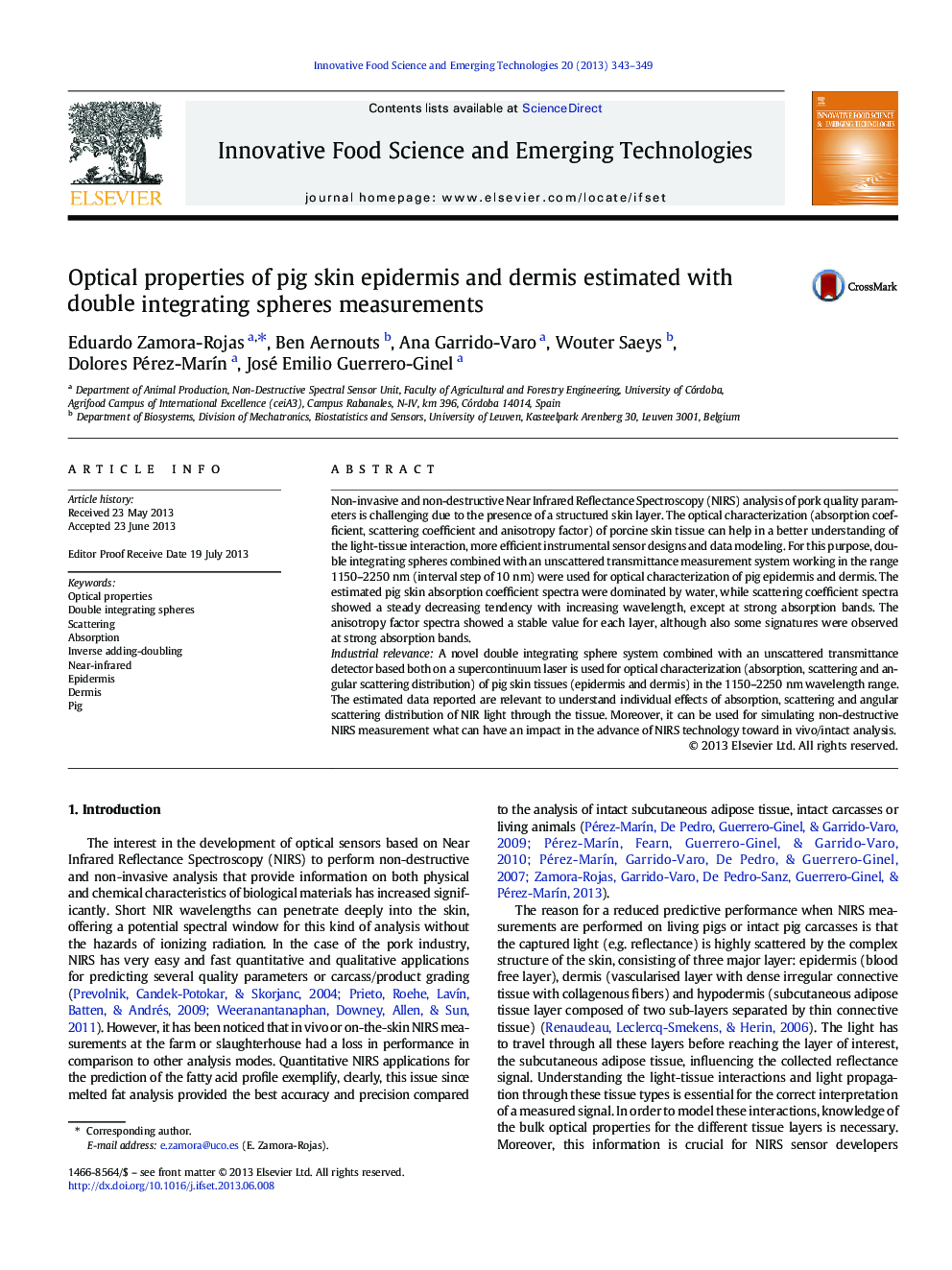| Article ID | Journal | Published Year | Pages | File Type |
|---|---|---|---|---|
| 2086608 | Innovative Food Science & Emerging Technologies | 2013 | 7 Pages |
•A novel DIS and unscattered transmittance measuring system is used.•Absorption, scattering and anisotropy factor of pig skin tissues are estimated.•Sample thickness is a critical point in the measurement and estimation procedure.•The results would promote efficient NIRS sensor designs for non-destructive analysis.
Non-invasive and non-destructive Near Infrared Reflectance Spectroscopy (NIRS) analysis of pork quality parameters is challenging due to the presence of a structured skin layer. The optical characterization (absorption coefficient, scattering coefficient and anisotropy factor) of porcine skin tissue can help in a better understanding of the light-tissue interaction, more efficient instrumental sensor designs and data modeling. For this purpose, double integrating spheres combined with an unscattered transmittance measurement system working in the range 1150–2250 nm (interval step of 10 nm) were used for optical characterization of pig epidermis and dermis. The estimated pig skin absorption coefficient spectra were dominated by water, while scattering coefficient spectra showed a steady decreasing tendency with increasing wavelength, except at strong absorption bands. The anisotropy factor spectra showed a stable value for each layer, although also some signatures were observed at strong absorption bands.Industrial relevanceA novel double integrating sphere system combined with an unscattered transmittance detector based both on a supercontinuum laser is used for optical characterization (absorption, scattering and angular scattering distribution) of pig skin tissues (epidermis and dermis) in the 1150–2250 nm wavelength range. The estimated data reported are relevant to understand individual effects of absorption, scattering and angular scattering distribution of NIR light through the tissue. Moreover, it can be used for simulating non-destructive NIRS measurement what can have an impact in the advance of NIRS technology toward in vivo/intact analysis.
